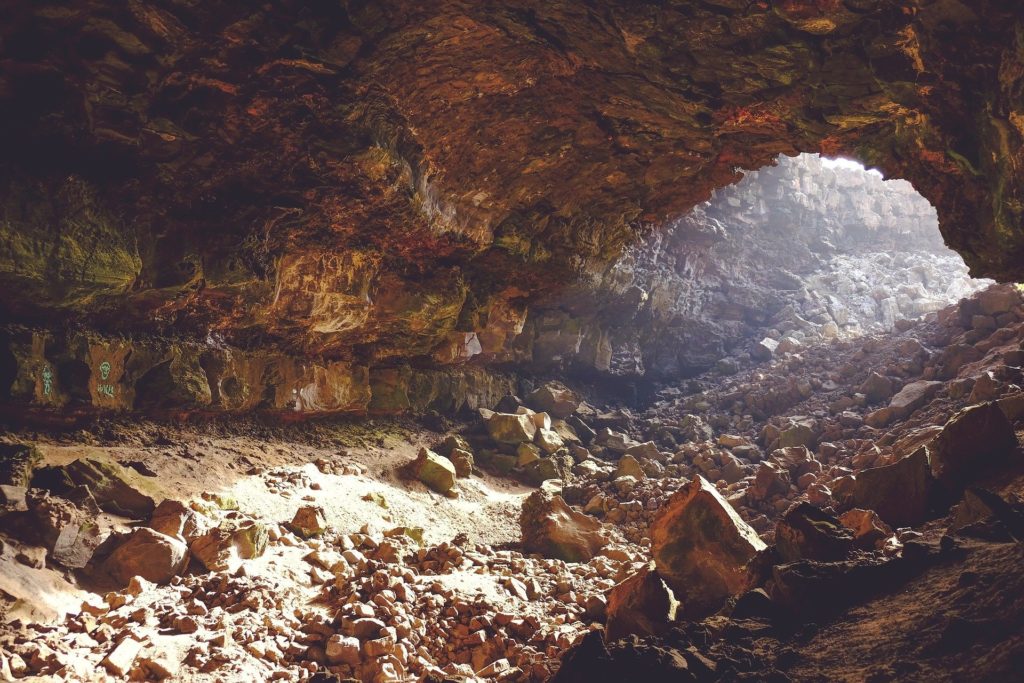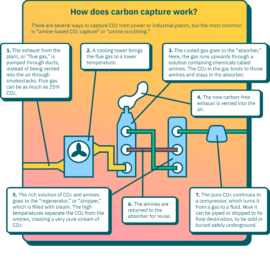
Carbon capture and sequestration here in Louisiana?
A renewed national focus on reducing carbon pollution which has been attributed to worldwide climate change has Louisiana businesses — homegrown and global players — searching for ways to capture and permanently store the emissions in deep underground saltwater aquifers. Known as “carbon capture and sequestration,” the process involves removing emissions such as carbon dioxide and pumping it under pressure, a process that causes the gas to become liquid, therefore more likely to remain deep underground for generations. These aquifers are different than salt caverns, which have been used for decades to store natural gas and oil like the federal strategic reserve in Hackberry.
nola.com
Louisiana could become a hub for this carbon storage. To create the storage, drills will have to do a deep drill underground. This could aid many of the drill companies that have been put out of business. Note this is one of the things about going to renewables, jobs are popping up to help the oil industry. The Governors Climate Initiatives Task Force is looking at this as we try to reduce emissions.
Edwards has been clear in linking his emission-cutting efforts to the state’s struggle to deal with climate change-fueled sea-level rise, which threatens to decimate much of the Louisiana’s coastal wetlands and increase the risk of hurricane storm surges and other flooding events for waterfront communities. And it’s also a target for the state’s Department of Natural Resources, which wants to be responsible for regulation of underground injection wells used for carbon sequestration as opposed to just the Federal Environmental Protection Agency. It would be like how the state Department of Environmental Quality is tasked with enforcing EPA rules that are expected to increasingly focus on reducing carbon emissions over the next few years. Secretaries of both departments sit on the governor’s task force. Edwards has already committed the state to reducing the net level of greenhouse gas emissions based on 2005 levels by at least 26% by 2025. The state looks to reach reduction up to 50% of net greenhouse gas emissions by 2030 and hit self-described “net zero” by 2050.
Louisiana has a long history of depending on oil throughout the years. Also there are a few coal plants and natural gas. Entergy is looking to buy solar energy. The legal framework was started by Governor Jindal but Governor Edwards will initiate it.
“I am committed to supporting private-sector investments that address greenhouse gas emissions in a major and sustaining way in our state,” Edwards said in a news release about the massive liquefied natural gas proposal by Venture Global LNG. The proposed LNG portfolio by Venture Global could capture enough carbon to offset emissions from 200,000 vehicles on the road, officials say. But it’s one of several in the works along with two multi-billion-dollar self-described “renewable” diesel projects with different original fuel sources but similar end products. One lies near the Port of Greater Baton Rouge across the Mississippi River from the steps of the Capitol and the other on a site in the Port of Columbia, a rural regional port along the Ouachita River about 25 miles south of Monroe in North Louisiana. “Storing carbon in the ground is very well proven,” said Hunter Johnston, an attorney of three decades, consultant for the carbon sequestration businesses and Louisiana native. “That’s why Louisiana has an oil industry because carbon has been stored in the subsurface.” “Most of carbon sequestration, we’re talking CO2 here, has been done through enhanced oil recovery since the ‘50s, the technology is very well understood,” he added. “However the policy and the incentives to do it where you’re not trying to recover oil through tertiary recovery that’s more or less new because there’s never been an incentive to do that. In Louisiana, there’s a lot of experience with companies that have the kinds of professionals who are knowledgeable about that but it’s not exclusive to Louisiana.”
The incentive is Federal Carbon credits of up to $50 per ton of carbon captured. Demand for information on carbon sequestration is in high demand.
Demand for information about how companies can move towards permitting carbon sequestration wells in Louisiana is through the roof, according to the state. “We get calls every day about (carbon capture) projects, there’s a lot of interest,” said Patrick Courreges, spokesperson for the Louisiana Department of Natural Resources, which fields calls from organizations interested in carbon-capture wells.
Venture Global LNG portfolio expects to capture 1 million tons of carbon per year. Despite this, this is not considered a “net zero” plan.
Venture Global would also likely need to modify its existing air permit on file with the Louisiana Department of Environmental Quality before it installs any carbon capture equipment, according to the state. “The extent of the modification would depend on how they would power the equipment,” LDEQ spokesman Gregory Langley wrote in a recent email, saying it’s the difference between electricity purchased from the grid or if it was generated on-site. Meanwhile, the Louisiana Department of Natural Resources already submitted an application to the federal government, asking permission from the EPA for the ability to permit the new wells. Louisiana could get that very approval within the year, but that’s still a bullish time estimate, officials said. It’s likely that in the coming years Louisiana’s overseer of natural gas and oil wells could very well be permitting carbon capture wells if approved. “We already know that Louisiana’s geology and industry are primed to be a major hub,” Secretary of Louisiana Natural Resources Tom Harris said in a news release. “This state is perfectly positioned to benefit from the growth of a carbon management industry.”
As of now, there are no carbon sequestration wells here in the state and few nationally. Chicago-area based Archer-Daniels-Midland Company has wirked with the University of Illinois on a carbon trapping site in Decatur, Illinois. Completed this month and funded by the Midwest Geological Sequestration Consortium by the U.S. Department of Energy’s National Energy Technology Laboratory, the goal is to store 1 million tons over 3 years.
It used 20,000 feet of wells to inject carbon more than 6,500 feet underground and is considered a milestone for the technology. “They are injecting CO2 coming off an ethanol facility,” Johnston, the carbon sequestration consultant and Washington D.C. attorney, said about the ADM project. While there is demand for customers of fuel sources from the “renewable” diesel which can be blended with petrochemical derived diesel such as in California and for LNG from nation-state-controlled utilities such as those across Europe and other long-time industrialized nations the entire carbon capture market is still in very early stages.
The one thing we do not know is the long term effects of this storage underground. We will have to start the process and see as the years progress.



